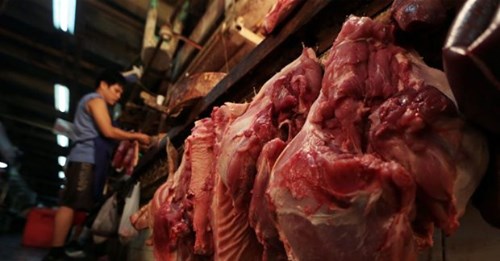The country’s agriculture chief has given the go-ahead to triple the country’s pork imports at lower tariffs as the available domestic pork supply continued to shrink.
With the Visayas reporting its first confirmed case of African swine fever (ASF) last week, the Department of Agriculture (DA) is looking at all available measures to plug the shortfall as it struggles to contain the viral hog disease.
Agriculture Secretary William Dar said in a phone interview that it was likely that the viral disease spread in the Eastern Visayas after semiprocessed meat products from Mindanao were transported to the island as traders tried to address the high demand for pork during the holiday season.
Local government units in neighboring Visayan provinces have imposed lockdowns since then.
From an annual minimum access volume (MAV) of 54,000 metric tons (MT), Dar said the DA was looking to triple that to 150,000 MT. Imports under MAV is slapped a 30-percent tariff against 40 percent for those outside the MAV.
Rieldrin Morales, newly assigned director of the Bureau of Animal Industry, said that the secretary has also ordered import permits under MAV to be given “as soon as possible.”
These new policies are expected to tame prices in the markets.
While the DA has yet to release an official number of culled hogs since ASF entered the country in 2019, members of the private sector said that 36 percent or 4.57 million hogs were already affected.
The United States Department of Agriculture earlier projected that the Philippines’ pork output this year could fall by 3.6 percent to 1.08 million MT—the lowest in two decades—as ASF keeps a firm grip on the local industry.
Wholesale and retail prices of pork continue to skyrocket. Farm-gate prices have risen by 10 to 15 percent from quotations early this month, monitoring reports from the Pork Producers Federation of the Philippines showed, while prices of pork belly and pork ham in the market have risen by 80 and 82 percent on average from year-ago levels.
The DA has allocated P400 million for hog repopulation programs, but livestock raisers remain wary given that the ASF is easy to transmit.
Morales said even advanced countries like Spain took decades before it was able to eradicate ASF. China, the biggest producer and consumer of pork, continues to struggle as well.
